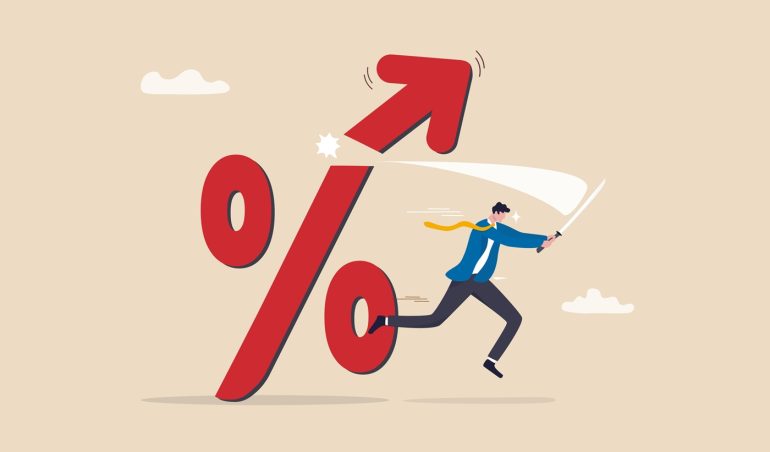For the first time since last spring, mortgage shoppers finally have a condition-free sub-5% fixed mortgage rate option.
Mortgage providers across the country have been busy chopping fixed rates in recent days following another steep drop in bond yields, which lead fixed-rate pricing.
Since early last week, the 5-year Government of Canada bond yield has fallen 38 basis points (bps), or 0.38%. Since bond yields peaked in early October, they are down nearly a full percentage point.

As a result, mortgage providers have been chopping rates by anywhere from 20-30 bps. That includes two big banks, Scotiabank’s online eHome rates and CIBC’s 5-year fixed rates, with the decreases averaging about 20 bps.
A quarter-point (0.25%) rate decrease translates into roughly $13 of payment per month for every $100,000 worth of mortgage debt, based on a 25-year amortization.
Sub-5.00% rates coming back
Thanks to this latest round of rate drops, today’s rate shoppers can now find a condition-free 5-year fixed rate under 5% for the first time since the spring.
Butler Mortgage dropped its insured 5-year fixed product by 30 basis points to a market-leading 4.99%. Ron Butler told CMT that the rate is available specifically for purchases with a down payment of less than 20%. He adds that it involves “tight underwriting.”
Thanks to the recent drop in bond yields, Butler says he expects other lenders and brokers to offer similar rates soon.
“This particular high-ratio rate is the easiest to securitize and therefore the easiest to offer the most competitive rates on,” he said.
We recently reported on a 4.99% 1-year fixed rate offer from True North Mortgage, however that product requires the borrower to renew with True North at the end of the term or face a fee equivalent to 1.5% of their remaining mortgage balance.
With mortgage rates rising over the past year and a half, borrowers began moving away from 5-year terms in favour of shorter terms on the expectation that rates would be lower before their next renewal.
Recent data from CMHC found that in the third quarter most borrowers (51%) chose a fixed-rate term of between three and five years compared to shorter terms of one to three years (21%). Another 17% selected 5-year (or longer) fixed rates, while 6% chose a variable rate mortgage.
Mortgage broker Dave Larock of Integrated Mortgage Planners says that while shorter terms make sense at this point in the rate cycle, he worries their high costs are deterring many borrowers.
“The premiums for shorter 1- and 2-year fixed rates are prohibitively high, and I worry that 5-year fixed rate terms will lock borrowers into today’s historically high rates for too long,” he wrote in a recent blog post.
Rates not falling as quickly as they should be
While this latest round of rate cuts is welcome news for borrowers, some note that rates aren’t dropping as quickly as they should be based on where bond yields are.
“Fixed rates are dropping, but not quick enough,” broker Ryan Sims told CMT. “Bond yields are down nearly 100 bps from the high, yet fixed rates are not down nearly as much.”
While he says some of that is due to risk premiums based on the potential for an economic downturn, he adds that there is also some profit taking by lenders. He said a continued slow and sustained easing in bond yields will be required for mortgage rates to continue falling.
Any sudden drops in yields could be in response to economic uncertainty, which heightens risk and can serve to keep rates elevated, he added.
Rate drops could lessen the mortgage renewal shock
The latest drop in bond yields—and slower decline in fixed rates—are also helping to ease concerns about the “renewal cliff” that’s been covered extensively in the media.
Among the big 6 banks alone, their recent earnings calls have shown that hundreds of billions of dollars worth of mortgages are set to renew over the coming three years.
But every drop in rates between now and then eases the payment shock that will be faced by those borrowers.
“I think it’s becoming clear that the ‘renewal cliff’ may not be the disaster some may think,” Butler told CMT.
“It’s still bad for borrowers looking at a substantial payment increase, but it looks today like—in the latter half of 2025 into 2026—they won’t be facing a rate that starts with a 6, but more likely a rate that starts with a 4.”








I cannot wait for the rate to go down decrease I have a mortgage rewnal coming up early next year. I just worry.